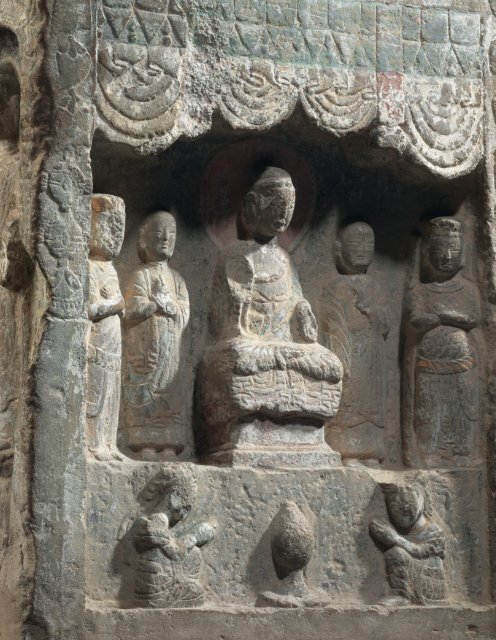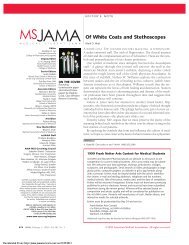SPECIALISTS AND SERVICES FOR THIS AUCTION
NYR14319_SaleCat
NYR14319_SaleCat
You also want an ePaper? Increase the reach of your titles
YUMPU automatically turns print PDFs into web optimized ePapers that Google loves.
THE MOST DRAMATIC<br />
FEATURE OF THE DECORATIVE<br />
SCHEME IS THE CANOPY<br />
OF A LARGE BODHI TREE<br />
(PUTISHU 菩 提 樹 ), OR TREE<br />
OF KNOWLEDGE, WHICH<br />
DOMINATES THE UPPER HALF<br />
OF THE STELE’S BACK FACE.<br />
The Bodhisattva Maitreya appears in the niche on the stele’s back face;<br />
dressed in monk’s robes, he is presented as the Buddha he will become.<br />
He sits on a lotus throne with legs pendant, and he holds his hands in the<br />
abhaya- and varada-mudras, or gestures of preaching. Maitreya appears in<br />
a temple hall, a vertical post on either side supporting the gently curved,<br />
gabled roof. Favored disciples Ananda and Kashyapa appear immediately<br />
to Maitreya’s right and left, within the temple-hall enclosure, while a<br />
bodhisattva, standing on a lotus blossom, appears on either side, under the<br />
eaves and just outside the enclosure. A recumbent lion rests before the<br />
base of each vertical post; they face inward and look toward the alms bowl<br />
that contains an ofering for Maitreya. The most dramatic feature of the<br />
decorative scheme is the canopy of a large Bodhi Tree (Putishu 菩 提 樹 ), or<br />
Tree of Knowledge, which dominates the upper half of the stele’s back face.<br />
Each of the stele’s narrow sides claims three vertically set niches in which<br />
appears a meditating Buddha. The columns of text alongside the niches<br />
identify the particular Buddhas represented within, many of them being<br />
Buddhas associated with Esoteric Buddhism (Mijiao 密 教 ).<br />
In both style and iconography, this stele relates closely to a Maitreya Stele<br />
that dates to 687 and is now in the collection of the Asian Art Museum,<br />
San Francisco (B60S36+). The fgures display the full, round faces typically<br />
associated with Tang sculpture, and their drapery clings tightly, revealing<br />
not only the presence but the structure of the bodies it cloaks. More than<br />
anything else, the emphasis on naturalized depiction characterizes Tang<br />
sculpture, as witnessed by this stele.<br />
These three rare steles well illustrate the variety of Chinese Buddhist stele<br />
types, just as they also demonstrate the increasing complexity of Buddhist<br />
iconography over time and the evolution of styles from the formalized<br />
images of the Northern Wei to the naturalistic depictions of the Tang.<br />
Robert D. Mowry 毛 瑞<br />
Alan J. Dworsky Curator of Chinese Art Emeritus,<br />
Harvard Art Museums, and<br />
Senior Consultant, Christie’s<br />
250 IMPORTANT CHINESE ART FROM THE FUJITA MUSEUM



